LIMA, PERU — Sierra Metals (TSX: SMT; BVL: SMT) is proving up the underground potential of its Yauricocha silver–lead–copper–zinc–gold mine in west-central Peru. The low-cost underground mine is the company’s largest silver producer, having churned out 1.9 million oz. in 2013 at silver by-product cash costs of negative US$12 per oz.
The Vancouver-based miner expects cash costs to remain low as it reaches the mine’s deeper levels.
It plans to spend US$36 million over two years to upgrade the mine’s underground infrastructure, including US$3.6 million on exploration and development and US$10.5 million on other projects, such as buying new mining and milling equipment.
As part of that initiative, Sierra started the Yauricocha Shaft project in January. The project includes completing a 5.5 km long tunnel parallel to the existing Klepetko tunnel, and driving an internal shaft from the new tunnel on the 720 level down to the 1,220 level.
The new tunnel is set for a 2015 completion, with the shaft ready for use in 2016. Until the infrastructure is in place, Sierra will use the existing 4.7 km long tunnel and two shafts — namely the Central mine and Mascota shafts.
“The new shaft is deeper than the old shafts,” Fernando Piccini, the company’s chief financial officer, says one afternoon in May as we take the Pan-American Highway south from Lima. “We are building a new shaft and a new tunnel to access deeper ore, with the purpose of getting rid of operational bottlenecks and to increase production.”
The additions should bring the daily 2,466-tonne mining rate to 3,288 tonnes, Piccini says, noting that the new tunnel bypasses the mine’s subsidence zone.
“The subsidence is caused by the block-caving method. Subsidence cones are formed around the caved openings,” Guy Bedard, Sierra’s senior engineer and business development manager, later explained in an email.
Less than two hours after leaving bustling Lima, we pull into El Piloto, a popular diner known for its seafood. From here, we make a four-hour trip to the mountainous Alis district, situated at a 3,500-metre altitude, to acclimatize for before touring the Yauricocha property the next day.
There are two routes to the mine from Lima. You can cruise the coastal Pan-American Highway from Lima through Canete to Yauricocha and cover 370 km in six hours — which is the route we opted for — or you can head to La Oroyo and Huancayo, and then the site, covering 400 km in seven hours.
The next morning we headed to Sierra’s flagship property. The mine is a short drive from the rustic town of Alis and located in Yauyos province. The 188 sq. km property straddles a 20 km strike length of the Yauricocha fault, a major ore-controlling structure, and sits at an average 4,600-metre altitude.
Yauricocha is a high-temperature, carbonate-replacement deposit that has been in production for more than 60 years, and has at least another seven years of life based on current reserves.
To prolong the mine life, Sierra is expanding the reserves at depth. Bedard, who joined us after the site visit, points out Sierra is mining Yauricocha at a 700-metre depth, noting similar deposits in Peru extend to a 2 km depth.
Sierra’s founder and chairman Alberto Arias said in a June interview that Sierra recently intercepted mineralization at depths exceeding 1,350 metres, which shows the depth potential of orebodies at the Yauricocha mine.
Asked if the mineralization could go deeper, he notes that all the orebodies remain open to depth and would need more drilling. “What we know is that there is no evidence of any fault that would make the mineralization all of a sudden disappear, and second, the continuity of 1,400 metres from surface to depth is a pretty good sign that there’s likely more.”
A century of mining
Snow-dusted mountain peaks dominate the landscape at Yauricocha. We pass a row of abandoned buildings that once housed employees’ families under a previous operator.
Today, the project employs 1,600 workers, including contractors. Workers reside in two camps: one near the mine and other by the mill.
In the exploration office, Bernardo Cabezas, Yauricocha’s operations manager, provides an overview of the mine’s history and Sierra Metals’ current plans before giving us a tour of the mine’s 920 level.
At the start of the twentieth century, the Valladares family filed claims for what is now Yauricocha. The family mined copper oxides before selling the property to the Klepetko family, which used llamas to haul ore to the railway to Canete.
In 1927, Cerro de Pasco bought the Yauricocha claims and dug out different development levels and a shaft. It began mining the property in 1948 and replaced the llamas with cable cars.
The Peruvian government nationalized the mine in the early 1970s and state-owned miner Centromin operated it until 2002.
Centromin built the current Klepetko tunnel and added another shaft. It also introduced an underground rail consisting of 20-tonne trolley cars to haul ore to the on-site Chumpe plant. It documented the production of silver, lead, copper and zinc.
In 2002, Sociedad Minera Corona S.A. bought the Yauricocha mine and privatized it. Nine years later Sierra’s chairman used his Peruvian connections to help buy 92% of the voting shares of Corona, representing an 82% equity interest in Yauricocha.
“We’ve got a pretty good network of connections throughout Latin America, and through those relationships we saw this family run company as an opportunity for a Canadian company like Sierra Metals to acquire and improve it, and get good returns,” Arias said from his office in New York City.
Sierra Metals, formerly named Dia Bras Exploration, paid US$286 million in May 2011 for the mine, using proceeds from a $137-million equity raise and a US$150-million credit facility.
Corona, which is listed on the Lima Stock Exchange, controls the remaining 18% of the mine.
Arias is a former Goldman Sachs analyst and owns 81.2 million shares, or 51.3% of Sierra, through his private equity firm Arias Resource Capital Management.
“In less than two years after our acquisition, the mine distributed over US$100 million of dividends to Sierra Metals, which demonstrates how strong the operation’s cash flows are,” he says.
Sierra’s mining efforts
Since taking over as operator, Sierra has conducted extensive drilling to upgrade reserves and resources. It also improved the mining and milling methods to boost production and metal recoveries.
In 2011, it drilled 14,300 metres in Yauricocha’s central mine area, which comprises several orebodies, to expand mineralization and convert resources into reserves. The main mineralized structures in the central mine area include: Catas, Cuye, Antacaca, Antacaca Sur, Mascota and Rosaria.
A recent technical report describes the mineralization at the Yauricocha mine as “variably oxidized portions of a multiple-phase polymetallic system with at least two stages of mineralization, demonstrated by sulphide veins cutting brecciated bodies.”
The next year Sierra upped its drilling efforts, completing 40,700 metres on the property, including 6
,900 metres of semi-regional exploration.
Most of the 2012 drilling targeted the Cuye and Catas orebodies, where the company’s geologists confirmed that both structures remain open at depth. The team also discovered an orebody, later named Adrianna, some 270 metres below the deepest mine workings, beneath Cuye.
In 2013, the company drilled 15,500 metres on the central mine area and downplayed its regional exploration efforts.
That year, Sierra reported drilling extended mineralization of several orebodies in the central mine area at depth, highlighting that there could be 5 million to 6 million tonnes under the mine workings.
The firm is testing this potential in its 2014 program. It intends to complete 10,900 metres of drilling this year. Forty percent of that would be on the central mine area, and the rest on regional targets.
In May Sierra reported that two deep holes at Catas hit copper mineralization at level 1,350, which is 130 metres deeper than the previous drilling. It also released positive results from the Cachi-Cachi mine, located north to the central mine area.
Ninety percent of the ore is extracted from the Yauricocha mine, with the remaining 10% from the Cachi-Cachi mine, Cabezas says during a presentation.
Sierra, which updates Yauricocha’s reserves and resources annually, intends to publish another update later this year, which should include the drilling done past Jan. 1, 2013.
Reserves at the mine stand at 6.4 million tonnes grading 360.6 equivalent grams silver per tonne, or 94.8 grams silver, 0.70% copper, 2.09% lead, 2.53% zinc and 0.80 gram gold per tonne. This equates to 74.1 million equivalent oz. silver, or 19.5 million lb. silver, 97.5 million lb. copper, 295 million lb. lead, 356 million lb. zinc and 165,346 oz. gold. The estimate uses a cut-off grade of 83 grams per tonne silver, a US$26.28 per oz. silver price and 70% average silver recoveries.
PI Financial analyst Christos Doulis, who was on the site visit but doesn’t cover Sierra, said he was “impressed” by Yauricocha’s potential and believes “the current reserves represent only a small part of the ultimate mineral potential at the project.”
Yauricocha has a further 6.1 million measured and indicated tonnes averaging 458.7 equivalent grams silver per tonne, and another 370,000 inferred tonnes of 616.5 equivalent grams silver.
Touring Yauricocha
After suiting up in denim coveralls, steel-toed boots and hard hats, we take a man-lift down to Yauricocha’s 920 level, 600 metres below surface.
Trudging down the dim corridor, we see two miners breaking oversized material so it can fit through the ore pass. Less than 5% of the ore requires manual resizing, Cabezas says, noting more than 95% of the material readily falls through the ore pass onto the pad below.
Yauricocha’s main extraction method is sub-level caving, employed 85% of the time. It also uses overhand cut-and-fill stoping.
Miners hoist broken ore and waste through the shafts to the 720 extraction level where it is loaded onto rail cars and transported to the Chumpe plant.
We follow the energetic operations manager to the Mascota stope, where he picks up a few of the broken rocks at our feet and points out the high-grade copper mineralization.
Shortly after we resurface, we trek to the 2,500-tonne-per-day plant, where the ore is processed through crushing, grinding and flotation.
The Chumpe plant uses two milling circuits to treat ore from two types of deposits: the polymetallic circuit treats polymetallic ores containing silver, lead, copper and zinc; and the lead oxide circuit treats lead oxide ores, containing silver, gold and lead.
The plant produces five concentrates, including lead, copper and zinc concentrates from the polymetallic circuit, and copper and lead concentrates from the lead oxide circuit. From here, all the concentrates are loaded onto trucks and sold to a third-party refinery.
Last year, Yauricocha processed 837,496 tonnes to produce 1.9 million oz. silver, 6.5 million lb. copper, 37.1 million lb. lead, 50.8 million lb. zinc and 6,736 oz. gold. The cash cost per tonne processed was US$52, while the cash cost per payable silver was negative US$12, on a by-product basis.
In the first quarter of 2014, the mine churned out 494,300 oz. silver — a 4% increase year-over-year — along with 1.7 million lb. copper, 11.7 million lb. lead, 12.7 million lb. zinc and 1,474 oz. gold. The by-product cash cost per ounce of silver was negative US$21.11. The lower cost was driven by higher silver output and operating efficiency, the company says.
Sierra aims to improve the efficiency and metal recoveries at the plant by updating its equipment and tweaking its metallurgical circuits. It is also expanding its tailings and waste dumps.
According to the mine’s five-year economic model ending in 2017, Yauricocha should process 858,000 tonnes this year to produce 1.8 million oz. silver, 13,774 tonnes lead, 3,195 tonnes copper, 17,416 tonnes zinc and 8,245 oz. gold. Cash costs are estimated at negative US$12.82 per oz. silver, net of by-products.
Sierra is guiding company-wide 2014 production of 2.5–2.7 million oz. silver, 22.6–24.1 million lb. copper, 31.3–33 million lb. lead, 43.5–45.8 million lb. zinc and 7,700–8,200 oz. gold.
Along with Yauricocha, Sierra Metals owns the Bolivar copper–zinc–silver mine, and the Cusi silver–lead mine, both in Chihuahua State, Mexico.
“Our strategy is to continue to grow in high-quality projects that have low costs and high exploration potential,” Arias says. “That is the recipe to deliver shareholder value in the mining space . . . the beauty of our story is that our strong cash flows have not stopped financing the exploration and the development work that we are doing.”
Sierra ended the first quarter with US$40 million in its treasury.
It closed June 10 at $1.90 per share, with a $302-million market capitalization.

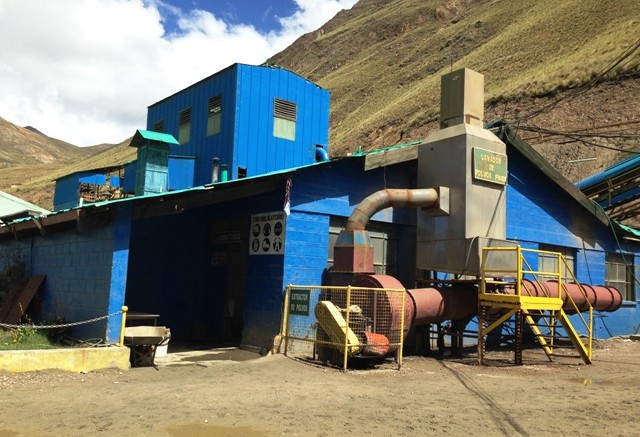
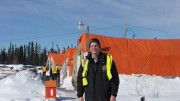
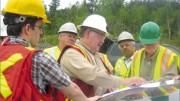
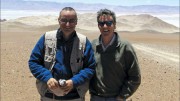
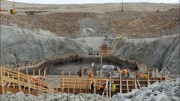
Be the first to comment on "Sierra Metals unleashes Yauricocha’s full potential"